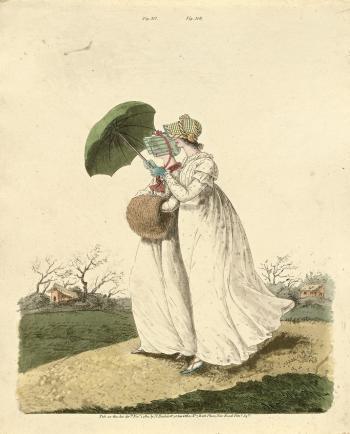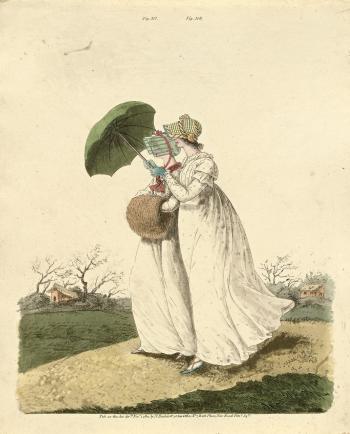Why Our Obsession with Jane Austen?
Think empire line, white muslin and those silly funnel-shaped bonnets.

Morning dresses, 1801, plate in Gallery of fashion, vol. VII, 1 November 1801-02, published by Nicolaus Heideloff, London, hand-colored etching, Julian Robinson Collection. Purchased, 1976 National Gallery of Australia, Canberra
|Updated:




